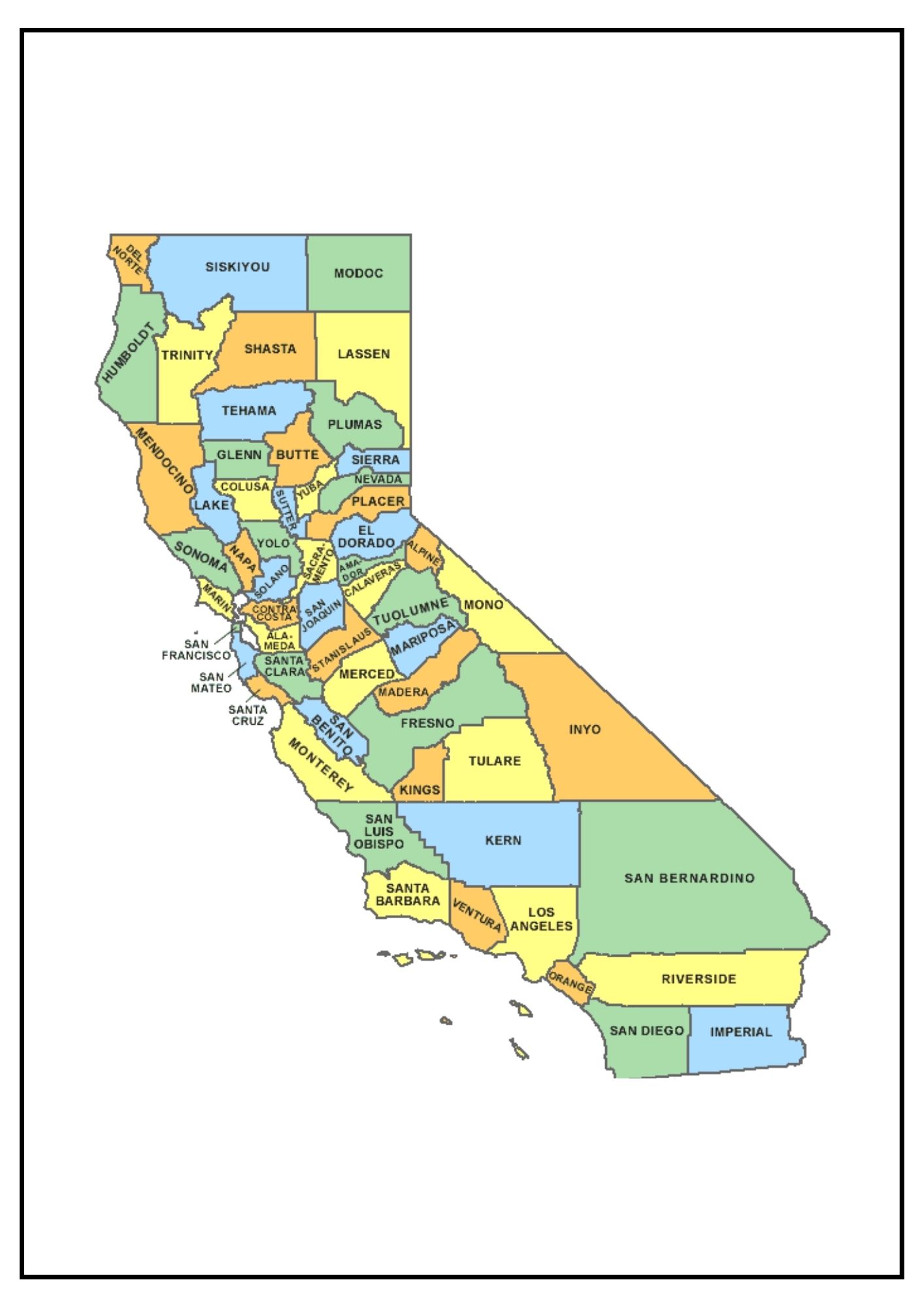California Counties Overview: How Many, Where, and Why They Matter
California Counties Overview: How Many, Where, and Why They Matter
Blog Article

Curious to know how many counties California actually has? You’d be surprised how many people ask the same question. Be it for research, a road-trip map, or pub-quiz glory, the magic figure 58 always surfaces, and stillthose two digits barely scratches the surface.
The Golden State’s 58 counties createa patchwork of contrasts: sun-drenched coastal hubs, pine-covered mountain regions, vast agricultural heartlands, and global entertainment capitals. Each county carries its own story, moulded byimmigration waves, cutting-edge innovation, and relentless population booms.
Over the next few pages, we’ll dig intohow the state’s county map froze at fifty-eight, the real responsibilities counties shoulder, and which ones stand out for size, population, or sheer quirkiness. Ultimately, you’ll know the facts—and be ready to ace any quiz with confidence.
Origins of California’s 58 Counties
On statehood day in 1850, the map looked nothing like today’s. A tidal wave of forty-niners and immigrants pushed officials to subdivide vast districts. By the end of the 1870s, the count had ballooned to more than fifty counties, and in 1907 the last adjustments were ratified, locking in the canonical figure of 5 8.
Legislative records show that fresh jurisdictions stemmed from three overlapping forces:
- Geographic isolation left settlers days from the nearest courthouse.
- Economic clashes pitting ranchers against merchants ignited partition drives.
- Language and immigrant communities demanded tailored governance.
Within a single generation, the political map hardened. Right now, no proposal to add a 59th county has cleared committee, causing commentators to dub the era of county creation truly closed.
From Kelp Forests to High Deserts: County Geography
Stretch a string from foggy Crescent City to sun-baked Imperial touching Mexico, and you’ll thread through dozens of ecosystems. Ocean-brushed jurisdictions benefit from Mediterranean precipitation, while basin counties in the Central Valley battle drought cycles.
- Mountain counties such as Placer, Nevada, and Alpine store California’s snowpack.
- Delta counties fight subsidence but export produce worldwide.
- Off-shore authorities like Ventura manage marine sanctuaries.
Such variety explains how water rights, zoning, and ag yields diverge so sharply. Weather sets tax bases and lifestyles.
Behind the Scenes at the County Level
Amid Sacramento’s delegated framework, cities tackle local bylaws, but counties shoulder the bread-and-butter functions that hold civilisation together. Life’s paperwork trail—marriage licenses, tax rolls, voter registries—all reside at the registrar of voters.
Elected sheriffs patrol towns too small for police forces, while trial courts hear civil suits. Social-services bureaus administer vaccination campaigns. Tax-allocation showdowns fill chamber galleries with activists.
Spotlight: Los Angeles County’s Scale
Contra Costa partners with nearby cities for animal control, highlighting how adaptable county structures can be. One template doesn’t fit all when land areas shift from 47 to 20 000 sq mi.
Ultimately, these 58 mini-capitols bridge Sacramento’s big laws and local reality. Understanding their remit empowers voters.
Where the People and Money Are
The state shelters over 39 million residents, but the headcount is far from evenly spread. LA’s single jurisdiction hosts more than one resident in four. On the flip side, tiny Alpine County hovers around a thousand residents.
- Top headcount: County of Los Angeles
- Fewest people: Alpine County
- Biggest footprint: San Bernardino County
- Tightest borders: San Francisco
Fiscal bandwidth mirrors population spread. Tech-centric jurisdictions report six-figure median incomes, while cotton-and-almond hubs depend on seasonal labour influxes. Such economic polarity informs legislative redistricting every decade.
Memorising these recordsmakes relocation plans simpler: county borders redraw here home-buying budgets and business licences.
The Ultimate California County Circuit
Adventure-hungry drivers, setting foot in each CA county is the new bucket-list quest. One ambitious loop kicks off in San Diego, follows Highway 101 past surf towns, jogs east near Santa Cruz, then threads through the Central Valley’s orchard belt, before climbing into the granite spine for ghost towns and mining museums.
Three-Day County Clusters
- South-land Loop – Border to wine country; 10 counties in three days.
- Crop-Belt Drive – Grapes to rice paddies; eight hours of orchards.
- Shasta & Siskiyou Turn – crater-rim roads; jaw-dropping vistas.
Close the circuit in Imperial, after two thousand kilometres of asphalt. At that point, you can answer any road-trip quiz about county tallies—because your copyright stamps prove it!
FAQ
Curious about California’s 58 counties? The following FAQ has you covered.
How many counties does California have?
State records confirm fifty-eight counties—a total locked in for over a century. Regardless of the source—be it Sacramento archives or federal census data: 58.
Where do the most Californians live?
The population heavyweight is Los Angeles County, hosting a population greater than that of many U.S. states. From Hollywood to high tech, a mix of industries continues to fuel steady inflow.
What is the smallest county in California by population?
Tiny Alpine County sits at the bottom of the population chart, rarely crossing the 1 200-resident mark. Its remote Sierra setting keeps growth modest, creating tight-knit communities.
Which county covers the largest land area in California?
San Bernardino County spans the most ground encompassing deserts, mountains, and metro suburbs alike. From Joshua trees to ski lifts, few regions illustrate California’s contrasts so vividly.
How did California end up with 58 counties?
Early statehood growth pressures split larger districts into smaller units, wrapping up after Imperial broke from San Diego in the early 20th century. Since then, proposals to add a 59th county have surfaced but never cleared the Legislature.
Can new counties still be created in California?
On paper, state statutes permit county formation, but the hurdles are steep. Petition drives, feasibility studies, dual-county referenda, and a two-thirds vote in Sacramento make secession rare. Hence, California has remained at 58 for generations.
Which responsibilities fall to county governments?
County governments deliver core public services: property assessments, public hospitals, welfare programs, and jails. Remove counties from the equation, and civil society would struggle to operate.
Report this page